I have tried the following but I am not sure if it is correct or not. How can I be sure?
-
So you are using a circuit simulator to do the DC sweep I-V curve tracing. Your curve looks OK. Of course you can prove it by an experiment using real components. I did that a couple of weeks ago. I used the following equipment (1) manual push button adjustable PSU, with fine steps of mV, (2) two cheap multi-meters to measure the voltage across the diode, and current of order 0.1mA and 0.1mV. So I took discrete manual I, V readings and use Excel to plot the I-V curve. The following two pictures show the setup and results / to continue, ... – tlfong01 Jan 06 '21 at 12:50
-
Sorry, I cannot show the pictures as comments. So I am uploading them as an answer. Please let me know if you wish to know more details. – tlfong01 Jan 06 '21 at 12:53
-
1@CanberkÖzçelik: [How to do an IV curve for real.](https://josepheoff.github.io/posts/iv-1-toc) – JRE Jan 06 '21 at 12:59
2 Answers
Question
How to plot the I-V curve of a diode?
Answer
Setup
Results
I am testing a tunnel. The current reading are too small to show clearly on only one continuous curve. So I am plotting three separate curves:
(1) before negative resistance region,
(2) negative resistance region,
(3) after negative resistance region.
I also used the python matPlotLib plotting package to plot a single tunnel diode I-V curve, as shown below.
References
(1) How to plot the I-V curve of a tunnel diode? - EE CD 2020nov
(2) RCA Tunnel Diode Manual - RCA 1966
- 2,766
- 1
- 9
- 17
-
1I have understood the principles and how to graph it with real components. But I am new to using Proteus and I am not sure if I have used the tools correctly. And also the graph which I got is different than yours. – Csopso Jan 06 '21 at 13:28
-
Ah, sorry, I forgot to point out that I was not using your 1N4001 rectifier/flyback diode. So my answer using a tunnel diode does NOT fit your question. I was wondering if I would repeat my I-V curve plotting experiment using the same component as yours: 1kΩ and 1N4001. Perhaps I can try that over the weekend. – tlfong01 Jan 06 '21 at 13:40
-
1@tlfong: I got a chance to look at a [tunnel diode this evening.](https://josepheoff.github.io/posts/iv13) I don't think you'll be able to plot the negative resistance part by hand. As cool as it would be to chart the negative resistance, it turns out that you don't need it to be able to design the biasing for an oscillator. – JRE Feb 15 '21 at 22:53
-
(1) I agree it is mission impossible to plot tunnel diode's I-V curve by hand. I just try to learn to plot any diode by hand first, and then by computer. I read a 60 year old GE tunnel diode manual on how the Tek guys using analogue scope/curve tracer, hinting how to do it. 60 years later, I can now use cheap MCP4725 12 bit DAC/EEPROM, with voltage follower to do DC sweep), use MAX4172 current sense amplifier to measure the tiny current, MCP3201 12 bit ADC to measure the current converted voltages, and then use MaPlotLib to auto plot I-V curve in zoomable log graph, / to continue, ... – tlfong01 Feb 16 '21 at 02:09
-
A month ago I completed testing all the above tools and found it feasible to start testing my several batches of tunnel diodes. My plan was to test rectifying diodes (1N400x) first, then Schottky diode, and finally tunnel diode. I know tunnel diode is counting its last days, but my objective is Learning how the tunnel stuff works, just curious, nothing practical like building an RF oscillator, which everybody says it is stupid to use tunnel diode to build oscillator, should use RF transistor now. – tlfong01 Feb 16 '21 at 02:30
-
Actually tunnel diode is only my side/pilot project. My main objective is to control 3W x 3 = 9W 750mA RGBYW LED lamps, using PWM constant current source LM3405, and auto I-V curve plotting is needed to blend RGB lamps which is part of my home automation system. Cheers. – tlfong01 Feb 16 '21 at 02:30
-
And you might like to see where my long stalled tunnel diode project has diverted to: 3W IR LED Controlling Chat Record: https://chat.stackexchange.com/transcript/119380/2021/2/5 – tlfong01 Feb 16 '21 at 02:40
-
It was 3 months ago, so I forgot reference to GE Tunnel Diode Manual and the Tekt guys using curve tracer to plot I-V curve of tunnel diode. I searched to find the following to refresh my memory. I need to read them again when resuming my tunnel diode project:(1) Chat record on GE Tunnel Diode Manual and Tekt Enggr plotting tunnel diode I-V Curve - 2020Nov14, https://chat.stackexchange.com/transcript/115699/2020/11/24 (2) Negative resistance from MOSFET circuit Asked 2020nov11, https://electronics.stackexchange.com/questions/531629/negative-resistance-from-mosfet-circuit/531846#531846 – tlfong01 Feb 16 '21 at 08:58
-
BTW, I have a blog summarizing what I have been doing to plot the I-V curve of a tunnel diode, the last post I stalled this project is on plotting 1N4148: https://tunneldiode.blogspot.com/2021/01/diode-1n4148-plot-program-part-3.html. The blog is in an untdy state, I need to clean up stuff before I resume this project. – tlfong01 Feb 16 '21 at 11:52
One thing that is obvious is that you have negative numbers in your plot. That is to say, your forward current is negative when it should be positive. In real life, that would mean you have your ammeter connected backwards. I don't know what you need to do differently in Proteus.
As for the shape of the curve, you can compare your current/voltage plot to the current/voltage plot given in the datasheet of the 1N4007.
The problem here is that your plot goes from 0 to about 500 milliamperes and the one in the datasheet goes from 10 milliamperes to 10 amperes - and the datasheet plot uses a logarithmic representaion for the current. The range of your plot would be down in the bottom left corner of the datasheet plot.
You could run your simulation over the same voltage range as the datasheet and see if they match. Remember that the datasheet uses a semi-log graph. That'll make a visual comparison look wrong unless Proteus can also do semi-log plots.
You'll probably find it easier to do spot checks against the datasheet curve - pick a voltage, read the current, compare to your own plot in Proteus.
I checked a few points from your plot and the datasheet:
| Current | \$V_{Canberk}\$ | \$V_{Datasheet}\$ |
|---|---|---|
| 100mA | 0.62V | 0.74V |
| 200mA | 0.75V | 0.786 |
| 300mA | 0.88V | 0.81 |
| 400mA | 0.98V | 0.83V |
It looks to me like your curve may be a little off. Simulators use models of the parts, and they may not be exactly correct in all cases. There's also the question of how accurate my measurements are from the plots in your post and from the datasheet.
For comparison, here's a current/voltage plot I made of a 1N4007 diode using a program I wrote together with a little bit of hardware and an Arduino:
You can see the typical exponential current curve of a diode quite clearly.
The current my little toy IV tracer can produce is (quite) limited, so the voltage only goes up to about 640 millivolts. That's right - my gadget generates a current and measures the resulting voltage. Most IV tracers sweep the voltage and measure the current. What can I say - I'm weird.
640 millivolts from the datasheet should be about 15 milliamperes of current. My plot says 3.9 milliamperes at 640 millivolts.
Who is right? Damifino.
- 67,678
- 8
- 104
- 179
